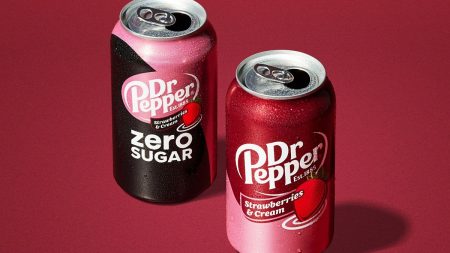The burgeoning labor dispute between Starbucks and its unionized workforce has escalated dramatically, culminating in a five-day strike affecting nearly 60 stores across the United States. Initiated by Starbucks Workers United, the strike commenced in key locations – Los Angeles, Chicago, and Seattle – and rapidly spread to encompass cities across the Northeast, including Boston, Pittsburgh, and New York, as well as locations in Dallas, Denver, and Portland, Oregon. The strike, strategically timed during the bustling holiday season, represents a significant escalation in the ongoing tension between the coffee giant and its employees seeking improved working conditions and compensation.
At the heart of the dispute lies the union’s contention that Starbucks has failed to honor its commitment, made earlier this year, to reach a contractual agreement with its unionized staff. This perceived breach of trust has fueled employee frustration, further exacerbated by unresolved legal issues stemming from hundreds of unfair labor practice charges filed with the National Labor Relations Board. These charges allege a range of violations by Starbucks, further complicating the already strained relationship between the company and its workers. The union argues that Starbucks’ actions demonstrate a disregard for its employees’ rights and contribute to a hostile work environment.
The timing of the strike, during the crucial holiday period, is no coincidence. Starbucks experiences a significant surge in sales during this time, and the union aims to leverage this peak business period to exert maximum pressure on the company. By disrupting operations during one of its most profitable periods, the union hopes to compel Starbucks to seriously address its concerns and negotiate in good faith. The disruption caused by the strike, while downplayed by Starbucks, potentially poses a significant financial impact, particularly on the company’s fourth-quarter earnings.
While Starbucks attempts to project an image of business as usual, minimizing the strike’s impact on its operations, the reality on the ground suggests a more complex picture. The company’s assertion that the strike has had “no significant impact” contrasts sharply with the union’s reports of widespread store closures and disrupted services. This discrepancy highlights the fundamental disconnect between the two sides and underscores the depth of the ongoing conflict. The union asserts that the strike is causing significant disruption and impacting Starbucks’ profitability.
Negotiations between Starbucks and the union have been ongoing since spring but have stalled due to fundamental disagreements, primarily regarding financial matters. Starbucks has offered a minimum 1.5% annual pay increase for unionized workers in future years, a proposal rejected by the union as insufficient. The union demands an immediate pay increase, reflecting the rising cost of living and the significant contributions of its members to the company’s success. This central disagreement over compensation underscores the differing perspectives on fair wages and the value of employee contributions.
Starbucks maintains that it offers competitive wages and benefits, highlighting an average hourly rate of $18 for US-based baristas, excluding benefits. Including benefits such as health coverage, free college tuition, and paid family leave, Starbucks claims an average hourly rate of $30. However, the union argues that these figures fail to adequately compensate employees, particularly in light of the company’s strong financial performance and the substantial compensation package of its CEO, projected to exceed $100 million in his first year. This stark contrast between executive pay and barista wages further fuels the union’s fight for fairer compensation and underscores the growing income inequality within the company. The union argues that the company’s profitability should be shared more equitably with its employees, who are instrumental in its success.














